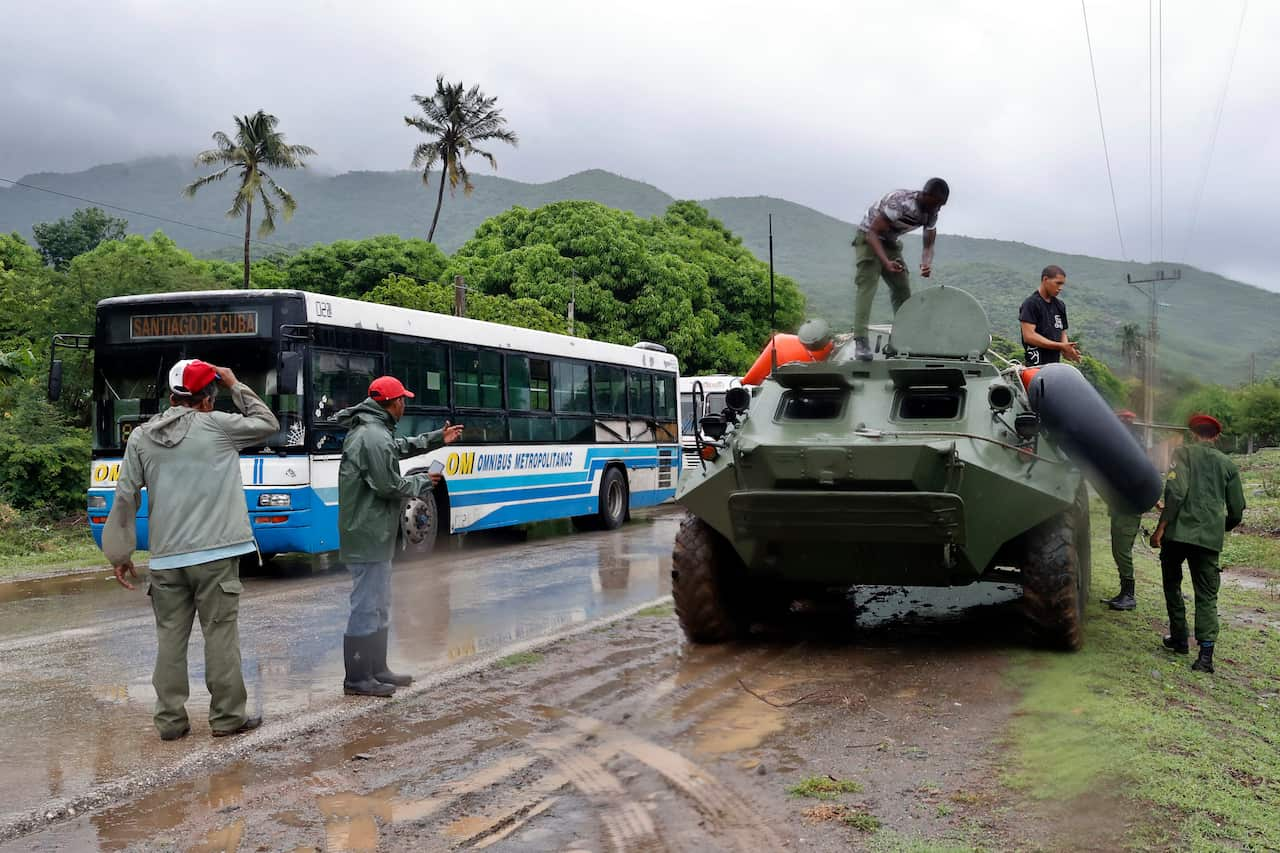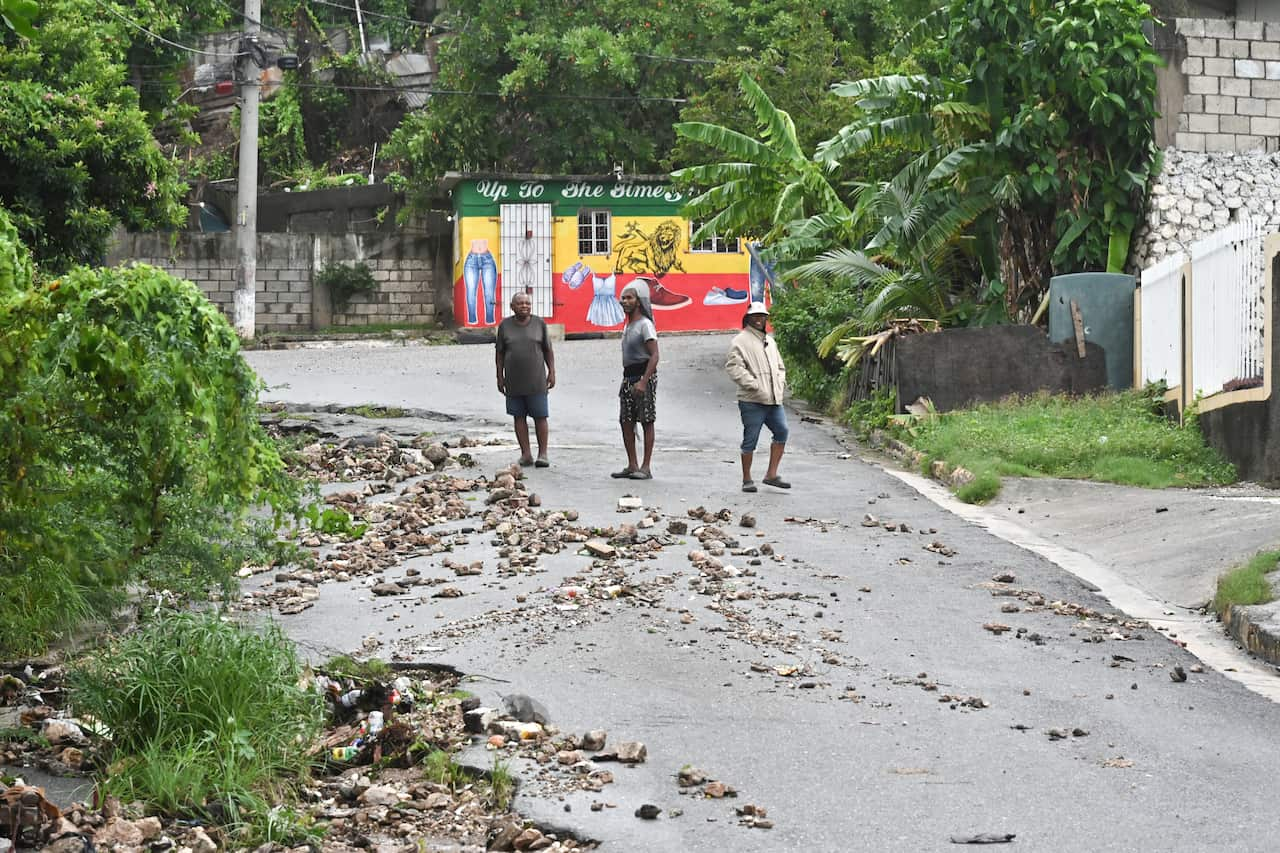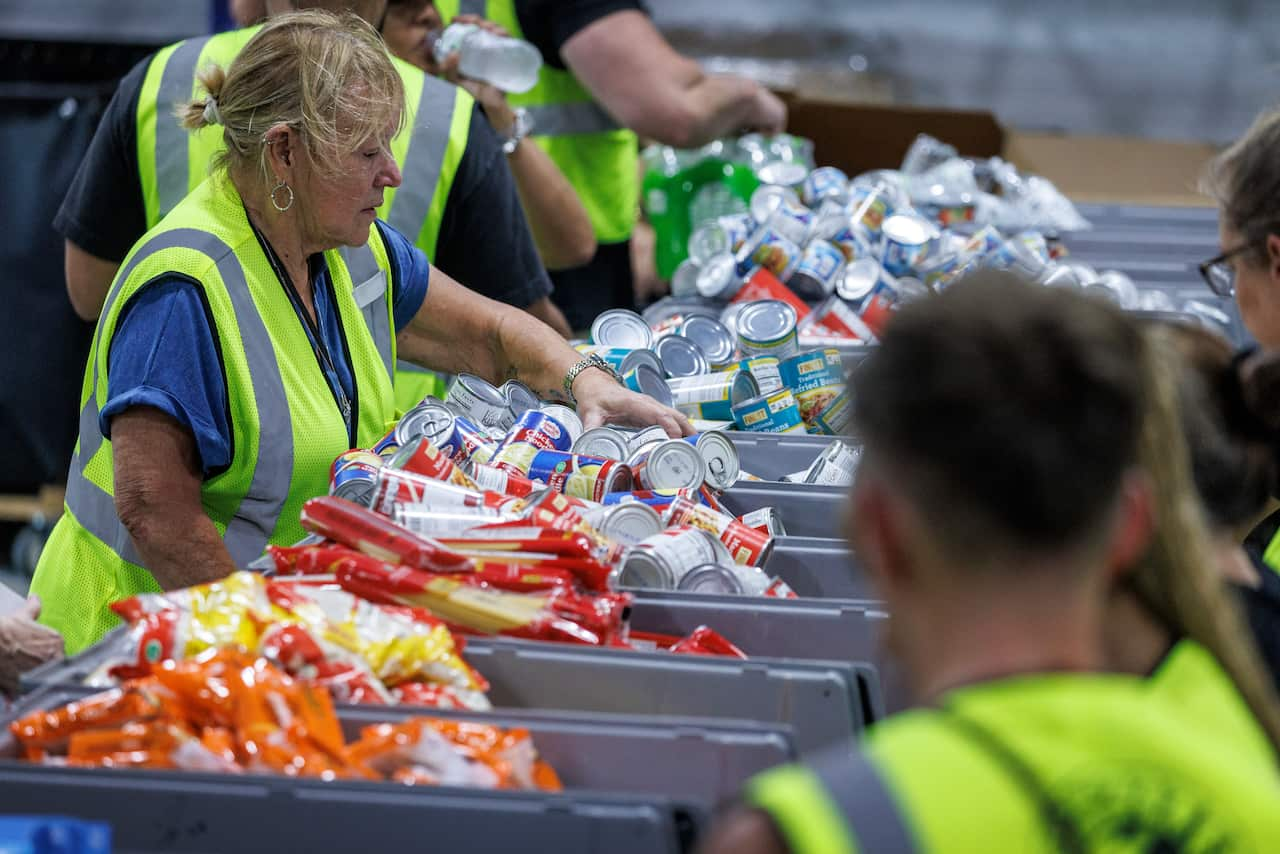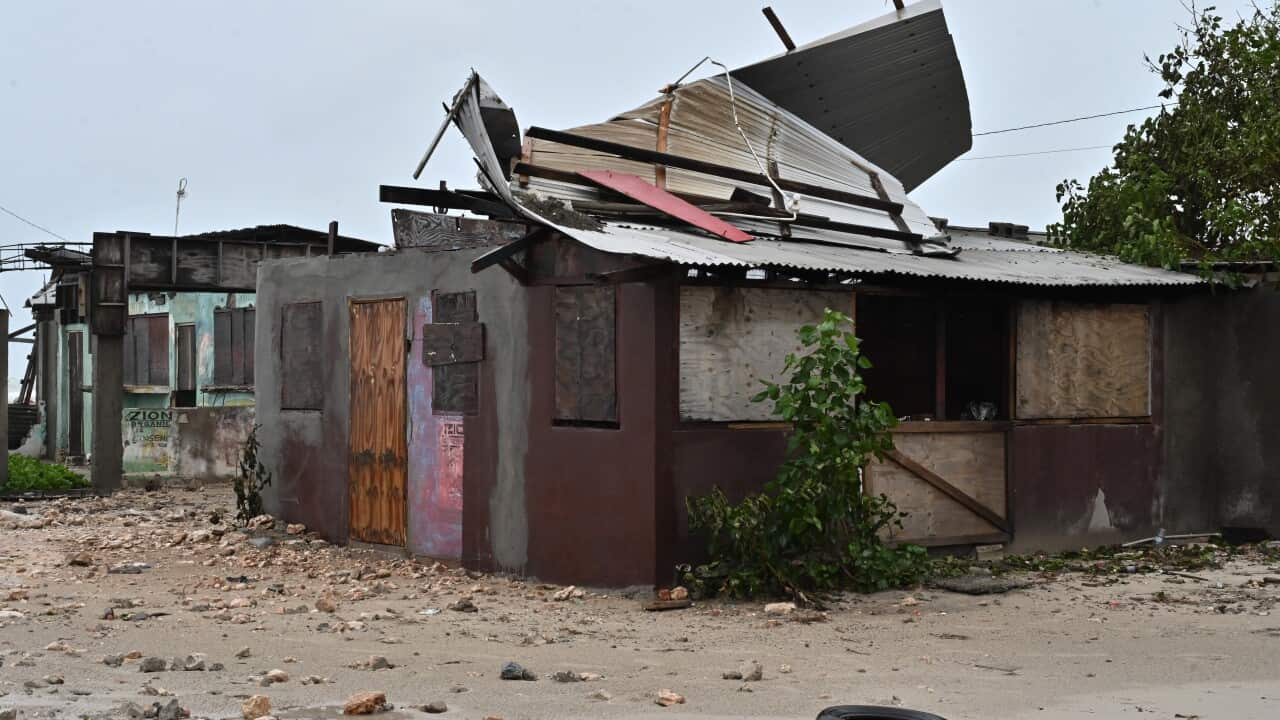Hurricane Melissa has ripped a path of destruction through Jamaica after making landfall as one of the most powerful hurricanes on record before heading towards Cuba.
Jamaican Prime Minister Andrew Holness declared the island a "disaster area" and authorities warned residents to remain sheltered over continued flooding and landslide risk, as dangerous weather persisted even as the hurricane's worst moved on.
The scale of Melissa's damage in Jamaica wasn't yet clear, as a comprehensive assessment could take days and much of the island was still without power, with communications networks badly disrupted.
At its peak, the storm packed ferocious sustained winds of 300km/h. Immediate details regarding casualty figures were not available.
Government minister Desmond McKenzie said several hospitals had been damaged, including in the hard-hit south-western district of Saint Elizabeth, a coastal area he said was "underwater".
"The damage to Saint Elizabeth is extensive, based on what we have seen," he told a briefing.
"Saint Elizabeth is the breadbasket of the country, and that has taken a beating. The entire Jamaica has felt the brunt of Melissa."
The hurricane was the worst to ever strike Jamaica, hitting land with maximum wind speeds even more potent than most of recent history's most brutal storms, including 2005's Katrina, which ravaged the US city of New Orleans.

Police officers and members of the Revolutionary Armed Forces collaborate in evacuating people on the road leading to the town of Chivirico, in Santiago de Cuba, Cuba. Source: AAP / Ernesto Mastrascusa / EPA
But the still-powerful Melissa was set to hit Cuba as early as Wednesday night, then the Bahamas.
Authorities urge vigilance against crocodiles
Even before Melissa struck Jamaica, seven deaths — three in Jamaica, three in Haiti and one in the Dominican Republic — had been blamed on the deteriorating conditions.
Jamaica's climate change minister told CNN Hurricane Melissa's effect was "catastrophic", citing flooded homes and "severely damaged" public infrastructure, and hospitals.
Health authorities have also urged vigilance against crocodiles displaced by the torrential rains.
"Rising water levels in rivers, gullies, and swamps could cause crocodiles to move into residential areas," the South East Regional Health Authority posted in a public service announcement on Instagram.
Mathue Tapper, 31, told the Agence France-Presse news agency from Kingston that those in the capital were "lucky" but feared for fellow Jamaicans in the island's more rural areas.
"My heart goes out to the folks living on the western end of the island," he said.

Hurricane Melissa made landfall in Jamaica with maximum sustained winds of nearly 295km/h, torrential rains, and storm surges that threaten to cause flooding and damage. Source: AAP / Rudolph Brown / EPA
Climate change impact
Broad scientific consensus says human-driven climate change is responsible for intensified storms like Melissa, which are occurring with increased frequency and a higher potential for destruction and deadly flooding.
Melissa lingered over Jamaica long enough that the rains were particularly dire.
Climate scientist Daniel Gilford said: "Human-caused climate change is making all of the worst aspects of Hurricane Melissa even worse."

The US-based humanitarian organisation GEM, which specialises in rapid disaster relief, is mobilising an aid operation both before and after Hurricane Melissa. Source: AAP / Christobal Herrera-Ulashkevich / EPA
The United Nations is planning an airlift of about 2,000 relief kits to Jamaica from a relief supply station in Barbados once air travel resumes.
Assistance is also planned for other impacted countries, including Cuba and Haiti, UN spokesperson Stéphane Dujarric told journalists.
Jamaican officials said some 25,000 tourists were in the country, famed for its normally crystalline waters.
Olympian sprinter Usain Bolt, one of Jamaica's most famous figures, meanwhile, has been posting regularly on social media with messages for his home country: "Pray for Jamaica."
Share


